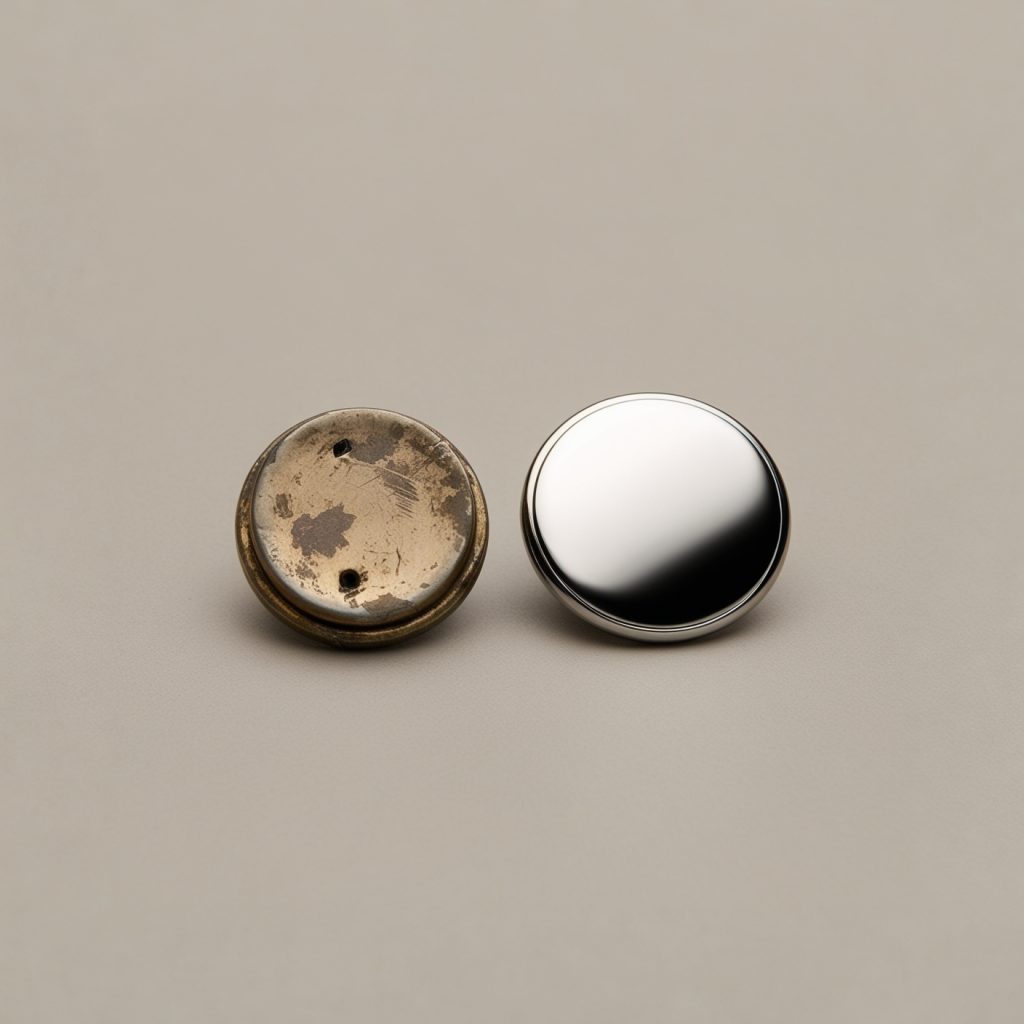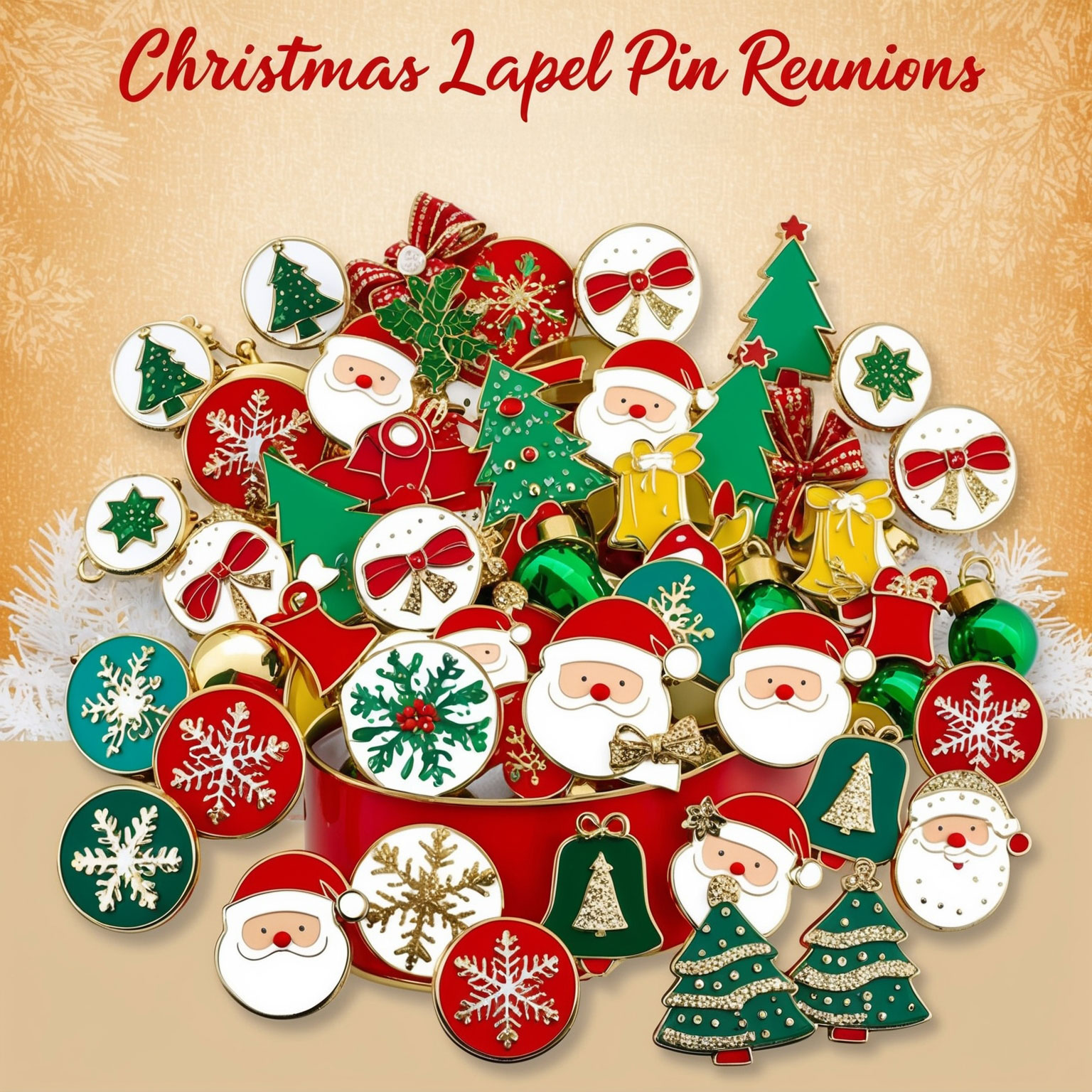Event lapel pins have long been a staple in the world of memorabilia, serving as tangible reminders of experiences, celebrations, and significant moments. Over the years, these small but meaningful items have evolved from simple souvenirs into highly collectible artifacts that capture the essence of cultural, social, and historical events. Whether commemorating a world fair, a sporting event, or a political campaign, event lapel pins have become cherished symbols of the times they represent.
In this article, we will trace the evolution of event lapel pins, exploring how they have transformed from modest keepsakes into valuable collectibles. We will delve into the history of event lapel pins, examine their role in different types of events, and highlight some of the most notable examples that have become prized possessions for collectors. Along the way, we will also discuss the factors that have contributed to the increasing value and desirability of event lapel pins in the world of collectibles.
The Origins of Event Lapel Pins
The history of lapel pins dates back centuries, with their origins rooted in practical and decorative uses. However, the concept of event lapel pins—pins specifically created to commemorate a particular event or occasion—began to take shape in the 19th century. These early pins were often simple in design, serving as mementos for attendees or participants in various events.
1. Early Commemorative Pins
One of the earliest forms of event lapel pins can be traced back to the mid-19th century, when commemorative pins were produced for exhibitions, fairs, and public celebrations. These pins were often made of metal and featured basic designs that included the name and date of the event. For example, pins created for the Great Exhibition of 1851 in London, the first international exposition, are among the earliest examples of event lapel pins.
These early commemorative pins were primarily intended as keepsakes, allowing attendees to remember their participation in the event. While the designs were relatively simple compared to modern lapel pins, they served as the foundation for the development of event lapel pins as a form of memorabilia.
2. Military and Political Event Pins
The use of lapel pins expanded during the late 19th and early 20th centuries, particularly in the context of military and political events. Lapel pins were created to commemorate military victories, honor veterans, and support political campaigns. These pins often featured patriotic symbols, such as flags, eagles, and portraits of political leaders.
For example, during the U.S. Civil War, lapel pins were distributed to show support for Union or Confederate causes. Similarly, pins created for presidential campaigns, such as those for Abraham Lincoln or Theodore Roosevelt, became popular political memorabilia. These early military and political event pins were not only symbols of loyalty and support but also precursors to the more elaborate event lapel pins that would emerge in the 20th century.
The Rise of Event Lapel Pins in the 20th Century
The 20th century saw a significant evolution in the design, production, and popularity of event lapel pins. As the world became more interconnected through international events, such as the Olympics and World’s Fairs, lapel pins emerged as a favored form of memorabilia. The rise of mass production and advances in manufacturing techniques also allowed for greater creativity and complexity in pin designs.
1. Olympic Games and International Sporting Events
One of the most significant developments in the history of event lapel pins is their association with the Olympic Games. The modern Olympics, which began in 1896, quickly became a global phenomenon, attracting athletes and spectators from around the world. To commemorate the event, the International Olympic Committee (IOC) began producing official Olympic lapel pins.
The popularity of Olympic lapel pins grew rapidly, with pins created for each edition of the Games. These pins featured the official logo of the Games, as well as symbols representing the host city and country. Collecting Olympic lapel pins became a popular pastime among fans, athletes, and officials, leading to the creation of a thriving pin trading culture.
In addition to the Olympics, other international sporting events, such as the FIFA World Cup and the Commonwealth Games, also began producing official lapel pins. These pins were often distributed to participants, officials, and fans, serving as both souvenirs and symbols of the event’s significance.
2. World’s Fairs and Expositions
World’s Fairs and international expositions were another key driver in the evolution of event lapel pins. These large-scale events, which showcased technological innovations, cultural exhibits, and international cooperation, were major attractions in the 20th century. As with the Olympics, lapel pins became a popular form of memorabilia for these events.
Lapel pins created for World’s Fairs often featured intricate designs that reflected the themes of the event. For example, the 1939 New York World’s Fair, which focused on “The World of Tomorrow,” produced lapel pins with futuristic motifs and the fair’s iconic Trylon and Perisphere structures. Similarly, the 1967 Montreal Expo, known as Expo 67, featured lapel pins with designs that celebrated Canadian culture and the event’s theme of “Man and His World.”
The popularity of World’s Fair lapel pins was further enhanced by their limited availability, as they were often produced in small quantities and distributed exclusively at the event. As a result, these pins became highly collectible, with some fetching significant sums at auctions and collector markets.
3. Political Conventions and Campaigns
The 20th century also saw the widespread use of lapel pins in political campaigns and conventions. These pins were created to promote candidates, support political causes, and commemorate significant events in political history.
For example, lapel pins were a common sight at U.S. presidential nominating conventions, where they were distributed to delegates, party members, and supporters. These pins often featured the candidate’s name, party logo, and slogans. Over time, they became valuable collectibles, with some pins from historic campaigns, such as those of John F. Kennedy or Ronald Reagan, becoming highly sought after by political memorabilia collectors.
Lapel pins also played a role in social and political movements, such as the civil rights movement, women’s suffrage, and environmental activism. Pins featuring slogans, symbols, and images associated with these movements became important tools for spreading awareness and rallying support.
The Modern Era: Event Lapel Pins as Collectible Artifacts
As we moved into the late 20th and early 21st centuries, event lapel pins continued to evolve, becoming more than just simple souvenirs. Advances in design, production, and distribution transformed lapel pins into collectible artifacts that hold both sentimental and monetary value.
1. Limited Edition and Commemorative Pins
One of the key developments in the modern era of event lapel pins is the rise of limited edition and commemorative pins. These pins are often produced in small quantities and are designed to mark specific milestones, anniversaries, or special events. Due to their limited availability, these pins are highly prized by collectors.
For example, many sports leagues, such as the NFL, NBA, and MLB, produce limited edition lapel pins to commemorate championship games, All-Star events, and other significant moments. These pins often feature unique designs and are made from high-quality materials, making them valuable additions to any sports memorabilia collection.
Commemorative pins are also popular in the world of entertainment, with pins created for movie premieres, music festivals, and fan conventions. These pins often feature the logos or images of beloved franchises, making them must-have items for fans and collectors alike.
2. Corporate and Brand Event Pins
In addition to sports and entertainment, the corporate world has also embraced the use of event lapel pins. Companies often produce lapel pins to commemorate corporate milestones, product launches, and employee achievements. These pins serve as both promotional items and symbols of company pride.
For example, tech companies like Apple and Google have produced lapel pins for their annual developer conferences, such as WWDC and Google I/O. These pins, often featuring the company’s logo or iconic product designs, are distributed to attendees and have become collectible items within the tech community.
Brand-related event lapel pins have also become popular at major industry trade shows, such as the Consumer Electronics Show (CES) and Comic-Con. Companies create limited edition pins that are given to attendees or used as part of promotional campaigns, further fueling the demand for these collectible artifacts.
3. Cultural and Social Event Pins
Cultural and social events, such as music festivals, art exhibitions, and charity galas, have also contributed to the evolution of event lapel pins. These pins are often designed to capture the spirit of the event and serve as lasting mementos for participants and attendees.
Music festivals, such as Coachella and Glastonbury, frequently produce event lapel pins that feature the festival’s logo, artwork, or themes. These pins are not only collectible but also serve as badges of honor for festival-goers who have attended multiple years.
Art exhibitions and gallery openings also produce event lapel pins that reflect the themes and works on display. These pins, often created in collaboration with artists, are highly sought after by collectors and art enthusiasts.
Charity events and fundraisers have embraced the use of lapel pins as a way to raise awareness and funds for important causes. These pins often feature symbols associated with the cause, such as ribbons for cancer awareness or hearts for humanitarian efforts. Collectors who support these causes value these pins for both their sentimental and philanthropic significance.
The Value and Desirability of Event Lapel Pins
As event lapel pins have evolved from simple souvenirs to collectible artifacts, their value and desirability have increased significantly. Several factors contribute to the value of event lapel pins in the world of collectibles:
1. Rarity and Limited Editions
One of the most important factors that determine the value of an event lapel pin is its rarity. Pins that were produced in limited quantities, such as those for exclusive events or limited edition releases, are often more valuable than mass-produced pins. Collectors are willing to pay a premium for pins that are difficult to find or that have a limited number of surviving examples.
For example, a limited edition lapel pin produced for a significant sports event, such as the Super Bowl or the Olympics, can become highly valuable if only a small number were made and distributed. Similarly, pins created for special anniversaries or milestone events are often sought after by collectors due to their rarity.
2. Historical Significance
The historical significance of an event lapel pin also plays a crucial role in its value. Pins associated with major historical events, such as the Olympics, World’s Fairs, or political campaigns, are often highly prized by collectors who value their connection to important moments in history.
For example, a lapel pin from the 1939 New York World’s Fair or the 1963 March on Washington can hold significant historical value, making it a valuable addition to any collection. The story behind the pin and its connection to a larger historical narrative can enhance its desirability and value.
3. Design and Craftsmanship
The design and craftsmanship of an event lapel pin can also influence its value. Pins that feature intricate designs, high-quality materials, and artistic elements are often more valuable than those with simple or generic designs. Collectors appreciate the artistry and creativity that go into making a well-crafted lapel pin.
For example, a cloisonné lapel pin with detailed enamel work and a polished finish is likely to be more valuable than a basic metal pin with a printed design. The craftsmanship and attention to detail can make the pin a standout piece in a collection.
4. Condition and Preservation
The condition of an event lapel pin is another key factor that affects its value. Pins that are in mint or near-mint condition, with no visible wear, scratches, or discoloration, are generally more valuable than those that show signs of age or damage. Original packaging, such as presentation boxes or cards, can also enhance the value of the pin.
Collectors who carefully preserve their lapel pins by storing them in a cool, dry place and protecting them from environmental factors can maintain or even increase the value of their collection over time.
5. Provenance and Authentication
Provenance, or the history of ownership, can add significant value to an event lapel pin. Pins that have a documented history, such as those owned by notable individuals or associated with specific events, are often more valuable than those without provenance. Authentication by a reputable expert or organization can also enhance the pin’s value by confirming its authenticity and historical significance.
For example, a lapel pin that was worn by an athlete at the Olympics or owned by a prominent political figure can command a higher price if its provenance is well-documented. Collectors should seek out authenticated pins with clear provenance to ensure they are acquiring a valuable and genuine artifact.
Notable Examples of Collectible Event Lapel Pins
To illustrate the value and significance of event lapel pins, let’s explore some notable examples that have become highly collectible artifacts:
1. 1968 Mexico City Olympics Black Power Salute Pin
The 1968 Mexico City Olympics is remembered for the iconic Black Power salute by U.S. athletes Tommie Smith and John Carlos during the medal ceremony. The moment became a powerful symbol of the civil rights movement and the struggle for racial equality.
Lapel pins created for the 1968 Mexico City Olympics, particularly those associated with the track and field events, have become valuable collectibles due to their connection to this historic moment. Pins that feature the Olympic rings and the year “1968” are particularly sought after by collectors who value the cultural and historical significance of the event.
2. 1982 World’s Fair in Knoxville Lapel Pin
The 1982 World’s Fair in Knoxville, Tennessee, was a major international exposition that focused on the theme of “Energy Turns the World.” The event attracted millions of visitors and featured exhibits from countries around the world.
Lapel pins created for the 1982 World’s Fair often feature the event’s logo, which includes a stylized sun and globe, as well as the year “1982.” These pins are prized by collectors for their connection to a significant cultural event and their distinctive design. Pins that were distributed to exhibitors, officials, or VIPs are particularly valuable.
3. 2008 Beijing Olympics Torch Relay Pin
The 2008 Beijing Olympics featured an extensive torch relay that traveled across the globe before arriving in Beijing for the opening ceremony. Lapel pins created to commemorate the torch relay are highly collectible, especially those that were distributed to torchbearers and officials.
These pins often feature the Olympic rings, the torch, and the year “2008,” as well as symbols associated with the host city of Beijing. The limited availability of these pins, combined with their connection to the Olympic tradition, makes them valuable additions to any sports memorabilia collection.
4. 1969 Apollo 11 Moon Landing Commemorative Pin
The 1969 Apollo 11 moon landing was a historic achievement that captured the imagination of the world. Lapel pins created to commemorate the moon landing are highly collectible, particularly those that feature the iconic image of the lunar module, the American flag, and the year “1969.”
These pins are prized for their connection to one of the greatest accomplishments in human history. Collectors who value space exploration and the legacy of the Apollo missions often seek out these pins as valuable artifacts.
5. 1994 FIFA World Cup USA Lapel Pin
The 1994 FIFA World Cup, held in the United States, was a landmark event in the history of soccer. The tournament attracted record-breaking attendance and helped to popularize the sport in the U.S.
Lapel pins created for the 1994 FIFA World Cup often feature the tournament’s official logo, which includes a soccer ball and the American flag, as well as the year “1994.” These pins are highly collectible, particularly those that were distributed to players, officials, or fans who attended the matches. The significance of the event, combined with the popularity of soccer, makes these pins valuable additions to any sports memorabilia collection.
The Enduring Appeal of Event Lapel Pins
Event lapel pins have come a long way from their humble beginnings as simple souvenirs. Over the years, they have evolved into highly collectible artifacts that capture the essence of significant cultural, social, and historical events. From the Olympics and World’s Fairs to political campaigns and space exploration, event lapel pins serve as tangible reminders of the moments that have shaped our world.
For collectors, event lapel pins offer a unique opportunity to own a piece of history and preserve the legacy of important events. Whether you’re a seasoned collector or just starting out, understanding the evolution of event lapel pins and the factors that contribute to their value can help you build a meaningful and valuable collection.
As you explore the world of event lapel pins, remember that each pin tells a story—one that is waiting to be discovered and cherished. By tracing the evolution of these small but significant artifacts, you can gain a deeper appreciation for the role they play in our collective memory and the enduring appeal they hold for collectors around the world.
If you are interested in some custom lapel pins, feel free to contact us at 1-855-471-6752 or fill out one of our FREE QUOTE FORMS.



